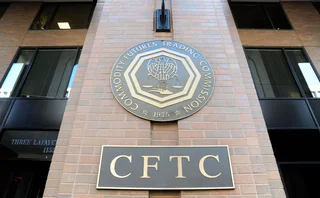
A decisive response

Fire fighting has become an integral part of the job spec for regulators. No sooner is one crisis addressed, another emergency has to be tackled. And the need for decisive, rapid responses has become critical since the failure of Lehman Brothers in September.
Confidence in banks was shot in October, with market participants openly wondering which firm would fail next. Libor rates were being set at record highs on an almost daily basis, credit default swaps for some financial institutions leapt into the thousands of basis points, while financial stocks were heavily sold.
In response, central banks pumped liquidity into the system and slashed interest rates. To boost confidence in the banking sector, governments across the globe revealed they would inject capital into financial institutions in return for equity stakes.
These measures have largely been successful - there is now widespread belief that governments will not allow a major financial institution to fail, and credit spreads have come down accordingly.
Worried about the effects of the credit squeeze spreading into the wider economy, many of the capital injections came with caveats. Chief among them was that banks should continue lending to small businesses and home owners - in the case of the UK, at 2007 levels.
That brings another problem straight to the top of the agenda: what happens when banks hit balance sheet limits? The traditional way of freeing balance sheets to enable further lending has been the asset-backed securities (ABS) market. But this market has been well and truly locked down.
It was collateralised debt obligations of subprime residential mortgage-backed securities that sparked the crisis. As a consequence, the packaging, tranching and selling on of asset-backed notes has been broadly demonised. Investors have shied away from ABSs as a result.
Recognising the importance of securitisation, the US Federal Reserve Board announced the creation of the Term Asset-Backed Securities Loan Facility to breathe life into the market. As part of this, the Federal Reserve Bank of New York will lend up to $200 billion on a non-recourse basis to holders of AAA rated ABSs backed by new and recently originated consumer loans and small business loans. That comes on top of a $100 billion package to buy the direct obligations of government-sponsored entities and $500 billion to buy mortgage-backed securities backed by Fannie Mae, Freddie Mac and Ginnie Mae.
Other regulators are believed to be contemplating similar responses, but they face a major test. If this latest initiative fails, the authorities will have to think of new ways to ensure banks are able to continue to extend credit to customers - not to mention risk manage this. A lot rests on this one initiative working and restoring confidence in the market.
- Nick Sawyer, Editor.
Only users who have a paid subscription or are part of a corporate subscription are able to print or copy content.
To access these options, along with all other subscription benefits, please contact info@risk.net or view our subscription options here: http://subscriptions.risk.net/subscribe
You are currently unable to print this content. Please contact info@risk.net to find out more.
You are currently unable to copy this content. Please contact info@risk.net to find out more.
Copyright Infopro Digital Limited. All rights reserved.
As outlined in our terms and conditions, https://www.infopro-digital.com/terms-and-conditions/subscriptions/ (point 2.4), printing is limited to a single copy.
If you would like to purchase additional rights please email info@risk.net
Copyright Infopro Digital Limited. All rights reserved.
You may share this content using our article tools. As outlined in our terms and conditions, https://www.infopro-digital.com/terms-and-conditions/subscriptions/ (clause 2.4), an Authorised User may only make one copy of the materials for their own personal use. You must also comply with the restrictions in clause 2.5.
If you would like to purchase additional rights please email info@risk.net
More on Regulation
Driving IT resilience through managed services
How Murex is supporting financial institutions with managed services and providing strategic solutions
US Basel equivalence questioned as EU patience wears thin
MEPs say unfaithful US implementation of Basel III could trigger review of access to EU markets
The Term €STR transition: challenges and market readiness
The progress, challenges and factors shaping the adoption of Term €STR as financial institutions transition from Euribor
CFTC takes red pen to swaps rules, but don’t call it a rollback
Lawyers and ex-regs say agency is fine-tuning and clarifying regulations, not eliminating them
EU edges closer to calming FRTB fund-linked fray
Dealers say temporary solution is a step in the right direction but won’t fully resolve all issues
European Commission changes tune on proposed FRTB multiplier
Banks fear departure from original diversification factor undermines case for permanent relief
Supervisors should be mindful of geopolitical risks, says IMF
Shock events cause sizeable swings in asset pricing, institution’s latest report highlights
Bowman won’t commit to stress-testing the tariff shock
Nominated Fed vice-chair stonewalls calls to run ad hoc scenario similar to 2020 Covid test







